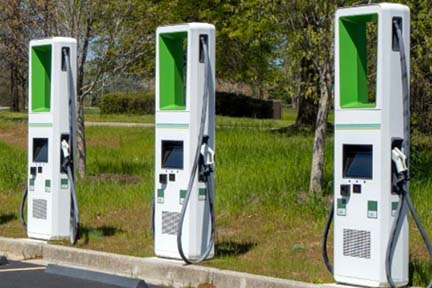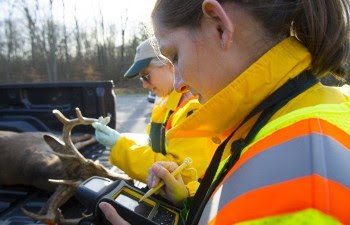
ICYMI: Michigan #1 State for Energy-Sector Job Growth
State added 35,463 energy jobs—more than any other state—from 2020 to 2021
LANSING, Mich. – Today, Governor Gretchen Whitmer announced Michigan has been ranked #1 in the nation for energy job growth according to the U.S. Energy and Employment Jobs Report (USEER). The state added 35,463 energy sector jobs from 2020 to 2021, more than any other state in the nation. Michigan’s job growth boosted total energy jobs in the state by almost 10%. Michigan’s 393,207 energy workers represent 5% of all U.S. energy jobs and 9.5% of state jobs.
“Michigan’s economy is on the move. Unemployment is low, small business growth is booming, and we had strong job growth last year. This report shows that Michigan is number one in the nation, adding over 35,000 good-paying energy jobs,” said Governor Whitmer. “When we invest in the future of mobility and clean energy and face climate change head-on, we can create tens of thousands of jobs, build prosperity in every region of our state, and ensure that we remain competitive for future business investment and economic development. I will work with anyone to keep growing Michigan’s economy and energy sector.”
“This report confirms what we already know – Michigan continues to be the number one state to live, work and play,” said Susan Corbin, Michigan Department of Labor and Economic Opportunity director. “We are committed to making sure everyone has an equal opportunity to succeed in these in-demand, rewarding careers in the energy sector and beyond – building a talent pool that’s second to none and driving the talent to meet employer needs.”
“This report shows that Michigan has a competitive edge in advanced energy and a vibrant industry that continues to create well-paying jobs,” said Dr. Laura Sherman, President of the Michigan Energy Innovation Business Council. “We must continue to establish supportive policies, set ambitious goals, and invest in training and infrastructure to ensure that the advanced energy industry continues to grow and thrive in our state.”
“These numbers demonstrate that the transition to EVs continues to spur job growth in multiple sectors of the economy,” said Glenn Stevens, Executive Director of MichAuto. “The big investments made by Michigan’s automobility industry in electrification are now yielding tangible results. Michigan must continue this momentum by solidifying industry and government partnerships to bring more mobility investment, innovation, and jobs to our state.”
Background on U.S. Energy and Employment Jobs Report
The report combines employer surveys with public data to track energy job growth in key areas, including electric power generation and transmission, fuels, energy efficiency, and motor vehicles. Prior to the COVID-19 pandemic, the energy sector was a fast-growing part of the economy, with employment growth rates at 3% — double that of the economy as a whole. While the energy sector was impacted by the COVID-19 pandemic, data shows that the sector has begun to rebound, employing 7.8 million Americans in 2021. The motor vehicle sector in particular grew 9.8% from 2020 to 2021.
Creating Clean Energy Jobs Governor Whitmer is committed to growing Michigan’s economy and creating clean energy jobs. Early in her administration, she made administrative changes to help build the largest solar array East of the Mississippi River. The governor also took steps to ensure that all State of Michigan facilities will be powered by 100% renewable energy by 2025 and worked to responsibly deploy solar and electric vehicle charging stations on state-owned property and land.
The governor has signed four bipartisan budgets since taking office, investing tens of millions of dollars in clean energy improvements and upgrades for state facilities, families, local governments, houses of worship, and small businesses. Her budgets have also consistently invested in Michigan Saves, the nation’s first nonprofit green bank supporting small businesses and working families with financing energy improvements.
In April, Governor Whitmer unveiled the MI Healthy Climate Plan, a roadmap to grow Michigan’s economy, lower costs for working families and small businesses, create clean energy jobs, and achieve economy-wide carbon neutrality by 2050 with interim goals in 2025 and 2030.
Investing in the Future of Mobility and Electrification
Governor Whitmer has helped Michigan build on its legacy and leadership in mobility. Last year, she worked across the aisle to pass a historic, bipartisan economic development package that empowers Michigan to win big projects and create thousands of good-paying jobs. This package helped Michigan compete for and win an historic $7 billion investment from GM, creating and retaining 5,000 jobs; a $1.7 billion investment from electric vehicle battery manufacturer LG Energy Solution creating 1,200 jobs; and a $2 billion investment from Ford that will create more than 3,200 jobs.
The governor has also launched mobility-focused workforce and talent initiatives like the EV Jobs Academy and the Mobility Talent Action Team to prepare Michigan’s workforce for future electric vehicle and component manufacturing jobs. She has also spearheaded a number of public-private partnerships including REV-Midwest, a 5-state regional electric vehicle charging network; the Lake Michigan Circuit, an electric vehicle route around Lake Michigan with electric vehicle chargers in state parks; and pioneering projects like CAVNUE, a corridor for autonomous vehicle testing, and a road that charges electric vehicles wirelessly while they are moving.
The recent bipartisan budget she signed—her fourth since taking office—included funding for a transformational education project focused on research and mobility centric workforce training at the University of Michigan.
|











 Want to see more pictures like this, taken by Michigan state parks photo ambassador
Want to see more pictures like this, taken by Michigan state parks photo ambassador  Fall is one of the best times to get involved in the DNR Wildlife Division – and one of the busiest.
Fall is one of the best times to get involved in the DNR Wildlife Division – and one of the busiest.
 Every two years, the
Every two years, the  If you enjoy riding off-road vehicles on Michigan’s forest roads, you can help the DNR shape the 2023 forest road maps. Submit comments by Aug. 31.
If you enjoy riding off-road vehicles on Michigan’s forest roads, you can help the DNR shape the 2023 forest road maps. Submit comments by Aug. 31.